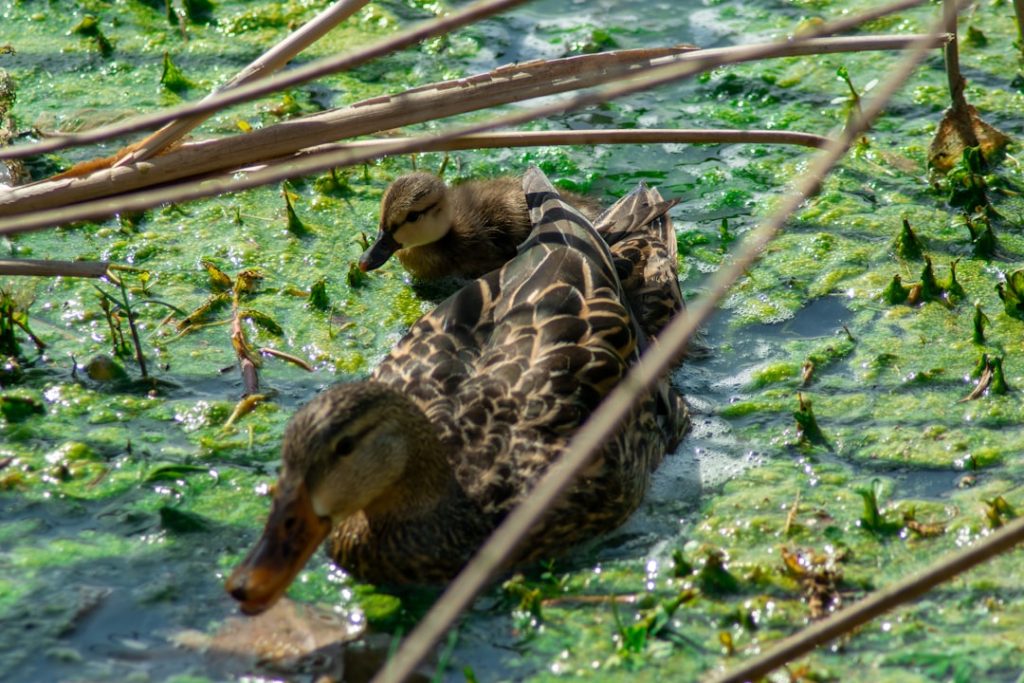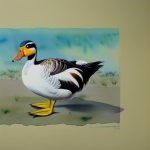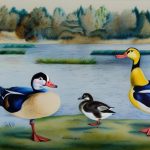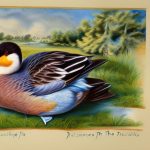Domestic Mallard Duck breeds are a popular choice for backyard poultry enthusiasts and small-scale farmers. These ducks are descendants of the wild Mallard duck, which is native to North America, Europe, and Asia. Domestic Mallard ducks are known for their beautiful plumage, friendly disposition, and excellent egg-laying abilities. They come in a variety of colors and patterns, making them a visually appealing addition to any flock. In this article, we will explore the history and origin of domestic Mallard duck breeds, their physical characteristics and appearance, behavior and temperament, care and maintenance, breeding and reproduction, as well as popular varieties and uses.
Table of Contents
- 1 History and Origin of Domestic Mallard Duck Breeds
- 2 Physical Characteristics and Appearance of Domestic Mallard Duck Breeds
- 3 Behavior and Temperament of Domestic Mallard Duck Breeds
- 4 Care and Maintenance of Domestic Mallard Duck Breeds
- 5 Breeding and Reproduction of Domestic Mallard Duck Breeds
- 6 Popular Varieties and Uses of Domestic Mallard Duck Breeds
- 7 FAQs
Key Takeaways
- Domestic Mallard Duck breeds are popular for their unique characteristics and versatile uses in agriculture and as pets.
- The history and origin of Domestic Mallard Duck breeds can be traced back to ancient times, with evidence of their domestication in various parts of the world.
- Physical characteristics and appearance of Domestic Mallard Duck breeds include a wide range of colors, patterns, and sizes, making them a diverse and attractive breed.
- The behavior and temperament of Domestic Mallard Duck breeds are known to be friendly, social, and adaptable, making them suitable for both farm and backyard settings.
- Care and maintenance of Domestic Mallard Duck breeds involve providing proper housing, nutrition, and healthcare to ensure their well-being and productivity.
History and Origin of Domestic Mallard Duck Breeds
The domestication of Mallard ducks can be traced back to ancient times, with evidence of their presence in Egyptian and Chinese cultures. These ducks were valued for their meat, eggs, and feathers, and were often kept in backyard ponds and waterfowl farms. Over time, breeders have developed various strains and varieties of domestic Mallard ducks, each with its own unique traits and characteristics. Today, domestic Mallard duck breeds are popular not only for their practical uses but also for their ornamental value. They are often kept as pets or for exhibition purposes, showcasing their stunning colors and patterns. The history and origin of domestic Mallard duck breeds are a testament to their enduring popularity and adaptability in various environments.
Physical Characteristics and Appearance of Domestic Mallard Duck Breeds
Domestic Mallard duck breeds are known for their striking appearance, with a wide range of colors and patterns to choose from. They typically have a sleek body with a slightly upright carriage, giving them an elegant and regal look. Their plumage can come in shades of brown, white, black, blue, and even rare colors like lavender and silver. Some varieties also have striking patterns such as bibbed, pied, or barred markings, adding to their visual appeal. Their bills are usually yellow or orange, and their legs are a bright orange color. The males, known as drakes, often have a glossy green head with a white ring around their neck, while the females, known as hens, have more subdued plumage with mottled brown and tan feathers. Overall, domestic Mallard duck breeds are known for their beauty and diversity in appearance, making them a popular choice for those looking to add a touch of color to their flock.
Behavior and Temperament of Domestic Mallard Duck Breeds
Domestic Mallard duck breeds are known for their friendly and sociable nature. They are generally docile and easy to handle, making them a great choice for families with children or first-time poultry keepers. These ducks are also highly adaptable to various living conditions, whether they have access to a pond or are kept in a backyard coop. They are excellent foragers and will happily graze on grass, insects, and aquatic plants, making them a valuable addition to any farm or homestead. Additionally, domestic Mallard ducks are known for their entertaining behavior, often engaging in playful antics such as splashing in water or chasing after insects. They are also good at forming strong bonds with their human caretakers, often following them around the yard or seeking out attention. Overall, the behavior and temperament of domestic Mallard duck breeds make them a delightful and rewarding addition to any flock.
Care and Maintenance of Domestic Mallard Duck Breeds
Caring for domestic Mallard duck breeds involves providing them with a suitable living environment, proper nutrition, and regular health maintenance. These ducks require access to clean water for swimming and bathing, as well as a secure shelter to protect them from predators and the elements. Their diet should consist of a balanced commercial feed supplemented with fresh greens, grains, and occasional treats such as mealworms or fruits. It is important to regularly clean their living quarters to prevent the buildup of waste and bacteria. Additionally, domestic Mallard ducks should receive routine veterinary care to monitor their health and prevent common ailments such as respiratory infections or parasites. Overall, providing proper care and maintenance for domestic Mallard duck breeds is essential for ensuring their well-being and longevity.
Breeding and Reproduction of Domestic Mallard Duck Breeds
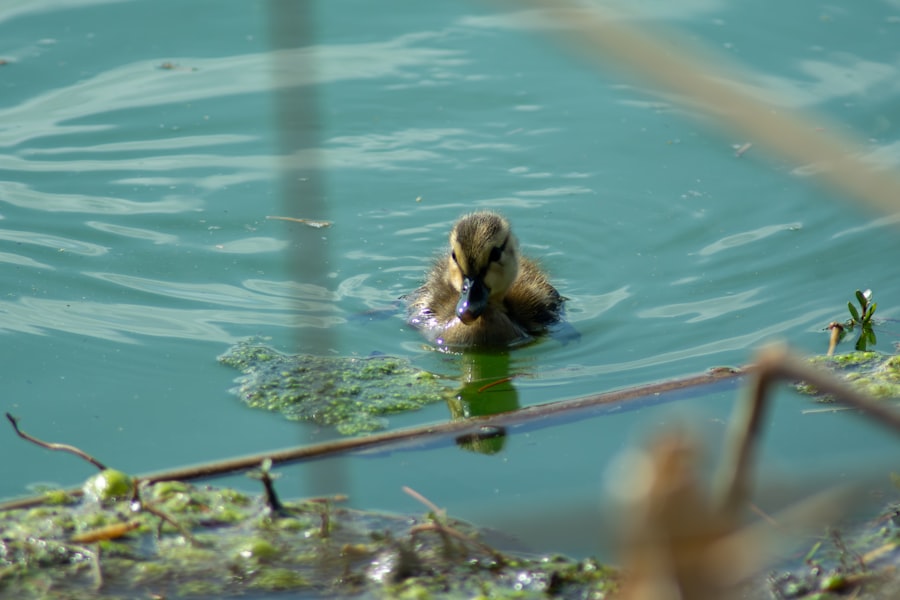
Breeding domestic Mallard duck breeds can be a rewarding experience for poultry enthusiasts. These ducks are known for their prolific egg-laying abilities, with hens capable of producing up to 200 eggs per year. The eggs are typically greenish-white in color and larger than chicken eggs, making them a valuable addition to the farm or homestead. To encourage breeding and reproduction, it is important to provide a suitable nesting area with plenty of clean bedding material. Hens will often lay their eggs in secluded spots near water or in a cozy nest box. Once the eggs are laid, they can be incubated by a broody hen or in an artificial incubator until they hatch. Ducklings are adorable and relatively easy to raise, requiring warmth, proper nutrition, and protection from predators. Breeding domestic Mallard duck breeds can be a fulfilling experience that allows for the continuation of desirable traits and the expansion of one’s flock.
Popular Varieties and Uses of Domestic Mallard Duck Breeds
There are several popular varieties of domestic Mallard duck breeds that are prized for their unique colors and patterns. Some of the most sought-after varieties include the Silver Appleyard, which is known for its striking silver plumage and excellent egg-laying abilities. The Saxony duck is another popular variety with its beautiful buff-colored feathers and calm temperament. Other notable varieties include the Blue Swedish, Cayuga, Magpie, and Welsh Harlequin ducks, each with its own distinct characteristics and uses. In addition to their ornamental value, domestic Mallard duck breeds are also valued for their practical uses such as meat production, egg-laying, pest control, and conservation efforts. Their adaptability to various climates and living conditions makes them a versatile choice for small-scale farmers and homesteaders looking to add diversity to their flock. Overall, the popular varieties and uses of domestic Mallard duck breeds showcase their versatility and appeal in both practical and ornamental settings.
In conclusion, domestic Mallard duck breeds are a popular choice for poultry enthusiasts due to their beauty, friendly disposition, and practical uses. Their history and origin can be traced back to ancient times when they were valued for their meat, eggs, feathers, and ornamental value. Their physical characteristics and appearance make them a visually appealing addition to any flock, with a wide range of colors and patterns to choose from. Their behavior and temperament make them easy to handle and enjoyable to watch as they engage in playful antics. Providing proper care and maintenance is essential for ensuring their well-being and longevity. Breeding domestic Mallard duck breeds can be a rewarding experience that allows for the continuation of desirable traits and the expansion of one’s flock. The popular varieties and uses of domestic Mallard duck breeds showcase their versatility and appeal in both practical and ornamental settings.
If you’re interested in domestic mallard duck breeds, you might also want to learn about creating a suitable environment for your poultry. Check out this informative article on creating a garden chicken coop to ensure your ducks have a comfortable and safe space to thrive. Understanding the importance of a well-designed coop is essential for the health and happiness of your feathered friends.
FAQs
What are domestic mallard duck breeds?
Domestic mallard duck breeds are a variety of domesticated ducks that have been bred from the wild mallard duck. They come in a range of colors and patterns and are popular for their beauty and usefulness.
What are the characteristics of domestic mallard duck breeds?
Domestic mallard duck breeds are known for their colorful plumage, ranging from shades of brown, white, and black. They have a distinctive iridescent green patch on their wings. They are also known for their friendly and docile nature.
What is the purpose of domestic mallard duck breeds?
Domestic mallard duck breeds are often kept for their eggs, meat, and pest control. They are also popular as ornamental birds in ponds and gardens due to their attractive appearance.
How do you care for domestic mallard duck breeds?
Caring for domestic mallard duck breeds involves providing them with a suitable living environment, access to water for swimming, a balanced diet, and protection from predators. They also require regular health checks and vaccinations.
Are domestic mallard duck breeds good for beginners?
Domestic mallard duck breeds can be suitable for beginners, as they are generally easy to care for and can adapt well to different environments. However, it is important for beginners to research and understand the specific needs of these ducks before getting them.
Meet Walter, the feathered-friend fanatic of Florida! Nestled in the sunshine state, Walter struts through life with his feathered companions, clucking his way to happiness. With a coop that’s fancier than a five-star hotel, he’s the Don Juan of the chicken world. When he’s not teaching his hens to do the cha-cha, you’ll find him in a heated debate with his prized rooster, Sir Clucks-a-Lot. Walter’s poultry passion is no yolk; he’s the sunny-side-up guy you never knew you needed in your flock of friends!

